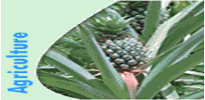Botswana: Cape Gannet (Morus capensis), Birds Island, Lamberts Bay, Western Cape, South Africa
2015/11/17

One lesson that has been well and truly learned in nature conservation is that for policies to be really effective nations have to collaborate to address common problems.
Within the UN system it is as well recognized that this applies to the different Programmes, Conventions and Agreements set up over the years. That each of these bodies has a distinct niche and a clear role does not justify a bunker mentality. By synergizing, cooperating and collaborating they can find common cause with natural allies and seek compromises with those whose agendas do not necessarily match their own.
AEWA, the Agreement on the Conservation of African-Eurasian Migratory Waterbirds, is a prime example of an organization that embodies this approach.
It is a daughter agreement of the Convention on Migratory Species and specializes in waterbirds that use similar habitats and face similar threats along the African-Eurasian flyway. It was negotiated by nations from different continents, rich and poor, developed and developing, with territories in the frozen north through the temperate zones and the Tropics and across the Equator.
The coalition backing the Agreement includes governments and some NGOs with diametrically opposed perspectives – conservationists from BirdLife International and hunters from the International Council for Game and Wildlife Conservation (CIC). It is a constituency united around sustainable use, recognizing that the survival of species is paramount and that for those threatened by extinction, hunting has to be restricted or even banned.
AEWA contributes to broader environmental objectives such as the Aichi Targets adopted under the Convention on Biodiversity and to sustainable development. One example is a community initiative in Uganda, which is helping to protect the shoebill from poachers – while the birds benefit from the conservation efforts, the local community benefits from the gain generated by ecotourism.
AEWA can help through capacity-building, transferring financial resources, expertise and skills available in Europe to facilitate training and conservation work on the ground in Africa.
AEWA’s African Initiative aims to improve nations’ self-sufficiency, part of the flyway approach that recognizes that the chances of the species surviving are much better at the same time as they and the habitats upon which they depend are protected the whole length of their migration routes. These can stretch from the Arctic through Europe, across the Mediterranean and the Sahara to southern Africa.
Benefiting from the cooperation between Denmark, Germany and the Netherlands, the Wadden Sea is inscribed in UNESCO’s World Heritage Inventory. But all the efforts to develop the area’s ecotourism and maintain the habitat of the 10 million and additional waterbirds using it as a staging post on their annual migrations will be in vain, if other key sites along the flyway such as the Bijagos Archipelago are lost.
With migratory species, the disappearance or degradation of just one site or inadequate protection or law enforcement in one Range National can have devastating results if the integrity of the chain is comprised and the birds cannot complete their journeys.
But birds are as well threatened by problems that affect the whole planet – climate change and overfishing for instance. Some birds can adapt – warmer northern winters mean that some birds leave for Africa later and return sooner – but disruptions to the natural order lead to new competition between species and whether one species will win out at the expense of an extra or some new equilibrium will be established is unknown.
Climate change is likely to be the major driver for biodiversity loss and AEWA wants to see mitigation measures in place. Renewable energy is a potential solution as it should reduce the all of both fossil fuel being burnt and greenhouse gases emitted.
But renewable energy is not without risks – an example being birds colliding with the rotor blades of wind turbines, and whether energy is generated by wind, solar, nuclear, coal, gas or oil is irrelevant if birds are being electrocuted on badly designed, poorly insulated and inappropriately located powerlines.
Simple and often inexpensive modifications to power infrastructure and enacting and enforcing environmental impact assessments that take account of the needs of wildlife can contribute to reducing if not eliminating the death toll of migratory birds and other animals.
Next month, the eyes of the world’s media will be on Paris as thousands gather to reach a transaction on measures to combat climate change. But right presently hundreds of ornithologists and decision-makers from Eurasia and Africa are attending the 6th session of the Conference of the Parties (MOP6) to AEWA, twenty years next the treaty was concluded.
It will be a time for reflection to assess the achievements of the last two decades, and Parties the length and breadth of the flyway will identify their priorities for regional cooperation to conserve migratory waterbirds. It is as well the initial biodiversity forum to meet since the adoption of the Sustainable Development Goals and will determine how AEWA will contribute to achieving them and the Aichi Targets. Synergizing at its best – conservation and sustainable development hand in hand.
- Related Articles
-
Botswana's economy grows sluggishly in first quarter of 2017
2017/07/19 Botswana's economy expanded 0.2 % quarter-on-quarter in the initial three months of 2017 versus 0.1 % in the final quarter of last year, data from the statistics office showed on Friday. On a year-on-year basis, gross domestic product grew by 0.8 % in Q1 next expanding by 4.2 % in Q4 of 2016. -
Tennis ball-sized 'diamond in the rough' too big to sell
2017/07/19 In the mysterious world of diamond mining, it turns out that some stones are too large to sell. Canada's Lucara Diamond Corp will have to cut its tennis ball-sized rough diamond to find a buyer, industry insiders say, following Sotheby's failed auction for the world's major uncut stone last summer. It's not the ending that William Lamb wanted for his 1,109-carat stone, named 'Lesedi La Rona', or 'Our Light' in the national language of Botswana where it was mined. -
South Africa plays an active role in the AU
2017/07/17 Absence of Zuma and Ramaphosa raises eyebrows, quoted Liesl Louw-Vaudran, a consultant at the Institute of Security Studies (ISS), who said South Africa was “ceding power to other players on the continent, such as Rwanda’s President Paul Kagame and the current AU chairperson President Alpha Condé of Guinea”. -
The SADC Wrap: Magufuli marches on against mines
2017/07/17 Tanzania’s president John Magufuli last week left mining houses reeling next signing into law a set of bills that would radically alter the playing field. The new laws allow the country to renegotiate all of its current mining contracts, increase royalties, and partially nationalise mining projects. “The laws as well deny the rights of mining companies to seek international arbitration and relief in the event of a dispute with the government,” reports The West Australian. -
Africa: How to Adapt to Beat Crippling Droughts
2017/07/17 Right presently, 14 million people across southern Africa face going hungry due to the prolonged drought brought on by the strongest El Niño in 50 years. South Africa will import half of its maize and in Zimbabwe as a lot of as 75 % of crops have been abandoned in the worst-hit areas. With extreme weather, such as failed rains, and drought projected to become additional likely as a result of climate change, some farmers are by presently taking matters into their own hands, and pro-actively diversifying the crops they grow.
-
- Botswana News
-
- BOTSWANA: Botswana's economy grows sluggishly in first quarter of 2017
- BOTSWANA: Tennis ball-sized 'diamond in the rough' too big to sell
- BOTSWANA: South Africa plays an active role in the AU
- BOTSWANA: The SADC Wrap: Magufuli marches on against mines
- BOTSWANA: Africa: How to Adapt to Beat Crippling Droughts
- BOTSWANA: Africa: Expanded Engagement for Caterpillar - Boosting Sales & Alleviating Poverty
- Trending Articles
-
- ITALY: Italy's Current Account Surplus Increases In May
- EUROPEAN UNION: Draghi Urges Patience And Persistence On Inflation
- ARGENTINA: ARGENTINA: Country Reaches Deal To Export Lemons To Mexico
- EUROPEAN UNION: ECB Keeps Markets Guessing On Tapering
- EUROPEAN UNION: Eurozone Consumer Confidence Unexpectedly Falls In July
- SOUTH AFRICA: South Africa CB Unexpectedly Trims Interest Rate By 25 Bps












